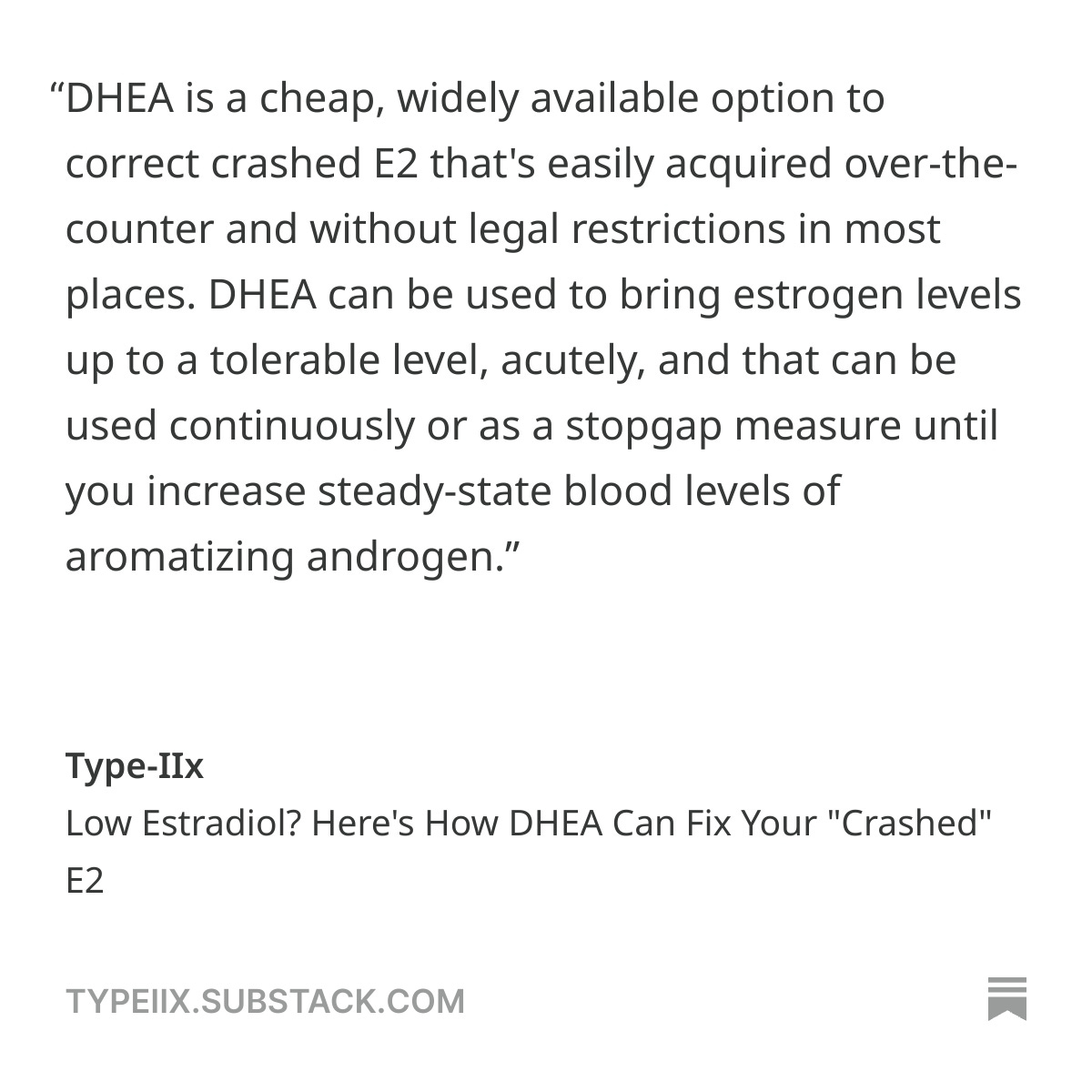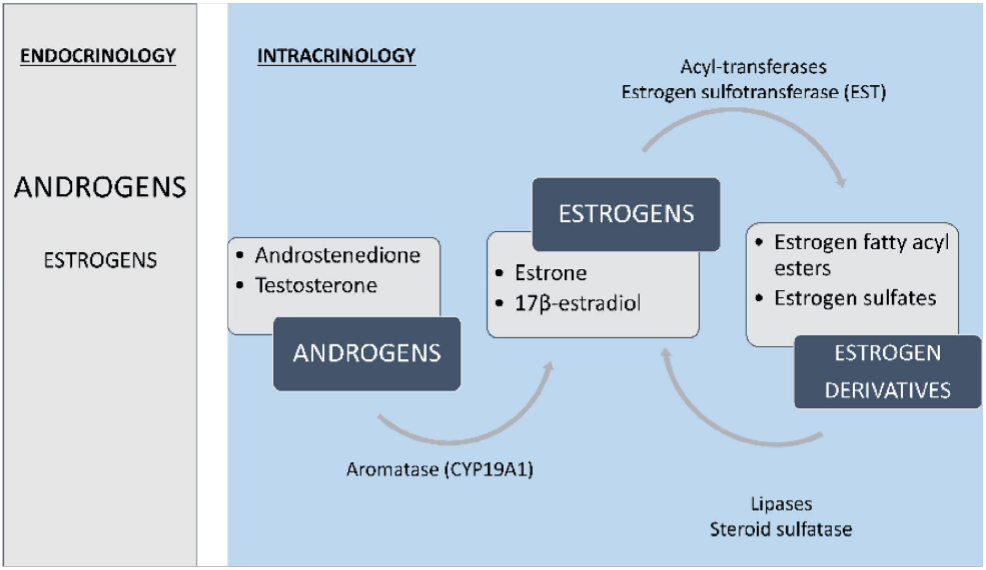Low Estradiol? Here's How DHEA Can Fix Your "Crashed" E2
From Low Estradiol? Here's How DHEA Can Fix Your "Crashed" E2
![Image]()
This relates to my podcast episode titled "DHEA for Crashed E2, Demystifying LR3 IGF-I, Supplemental Neurosteroids for Sexual Function, and Epistane for Fat Loss" found at DHEA for Crashed E2, Demystifying LR3 IGF-I, Supplemental Neurosteroids for Sexual Function, and Epistane for Fat Loss
Read More on Substack
And for a topical discussion relating to the pitfalls of relying on bloodwork levels to describe tissue-level estrogen regulation, refer to my Meso-Rx article titled Primobolan / Equipoise Crashed my E2 – Help! from https://thinksteroids.com/articles/...ations-of-circulating-levels-as-an-index-of-tissue-specific-estrogen-regulation and its section titled:
Limitations of Circulating Levels as an Index of Tissue-Specific Estrogen Regulation
![Image]()
Regulation of estrogen production and metabolism within peripheral tissues is enabled by local expression of Aromatase (CYP19A1), which converts androgens to estrogens (T ⇒ E2 and AD ⇒ E1 [E2 is the most prevalent estrogen in men; which may explain the greater tolerability for EQ in women]). Estrogens further can be converted to estrogen sulfates and estrogen fatty acyl esters via Estrogen Sulfotransferase (EST) and Acyl-Transferases, respectively. Finally, these estrogen derivatives can be converted back to parent estrogens by Steroid Sulfatase (Sulfatase) and Lipase activity [10].Adipose Tissue (AT) is particularly enriched in estrogen fatty acyl esters and consequently has an extensive buffering system that enables local regulation of estrogen production and metabolism… Notably, in a study of obese men, E2 fatty acyl ester concentrations did correlate in serum and fat (Wang, et al., 2013) [10], possibly indicating that serum estrogen levels influence stored estrogen content in AT, but conversion to bioactive forms is locally regulated [10].Several clinical studies have demonstrated dissociations between circulating and intra-adipose estrogen levels, including in men (Blankenstein, et al., 1992; Belanger, et al., 2006; Deslypere, et al., 1985; Wang, et al., 2013) [10].
In the context of this discussion about rapid aromatization in local tissues before blood see this note:
![Image]()
From Low Estradiol? Here's How DHEA Can Fix Your "Crashed" E2

This relates to my podcast episode titled "DHEA for Crashed E2, Demystifying LR3 IGF-I, Supplemental Neurosteroids for Sexual Function, and Epistane for Fat Loss" found at DHEA for Crashed E2, Demystifying LR3 IGF-I, Supplemental Neurosteroids for Sexual Function, and Epistane for Fat Loss
Read More on Substack
And for a topical discussion relating to the pitfalls of relying on bloodwork levels to describe tissue-level estrogen regulation, refer to my Meso-Rx article titled Primobolan / Equipoise Crashed my E2 – Help! from https://thinksteroids.com/articles/...ations-of-circulating-levels-as-an-index-of-tissue-specific-estrogen-regulation and its section titled:
Limitations of Circulating Levels as an Index of Tissue-Specific Estrogen Regulation

Regulation of estrogen production and metabolism within peripheral tissues is enabled by local expression of Aromatase (CYP19A1), which converts androgens to estrogens (T ⇒ E2 and AD ⇒ E1 [E2 is the most prevalent estrogen in men; which may explain the greater tolerability for EQ in women]). Estrogens further can be converted to estrogen sulfates and estrogen fatty acyl esters via Estrogen Sulfotransferase (EST) and Acyl-Transferases, respectively. Finally, these estrogen derivatives can be converted back to parent estrogens by Steroid Sulfatase (Sulfatase) and Lipase activity [10].Adipose Tissue (AT) is particularly enriched in estrogen fatty acyl esters and consequently has an extensive buffering system that enables local regulation of estrogen production and metabolism… Notably, in a study of obese men, E2 fatty acyl ester concentrations did correlate in serum and fat (Wang, et al., 2013) [10], possibly indicating that serum estrogen levels influence stored estrogen content in AT, but conversion to bioactive forms is locally regulated [10].Several clinical studies have demonstrated dissociations between circulating and intra-adipose estrogen levels, including in men (Blankenstein, et al., 1992; Belanger, et al., 2006; Deslypere, et al., 1985; Wang, et al., 2013) [10].
In the context of this discussion about rapid aromatization in local tissues before blood see this note:







